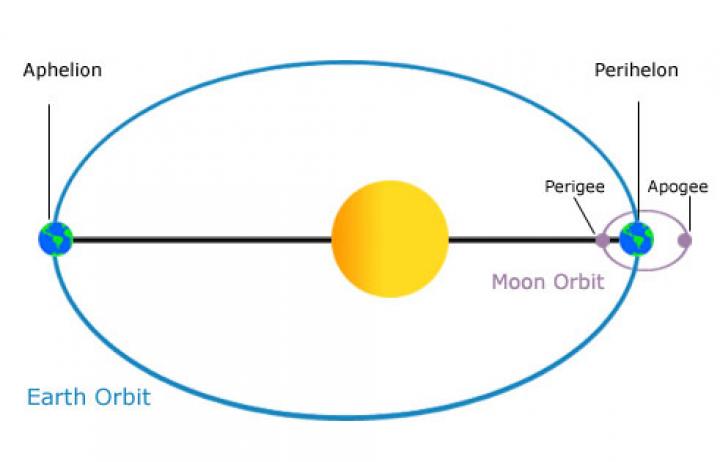We might have wondered how exactly night comes after a day or how the earth decides how many hours will be there in each. This is what the circle of illumination does- the division of the hours of a day into day and night.

What Is The Circle of Illumination?
The circle of illumination is a hypothetical line. It divides daylight and darkness from night. This passes as a straight line cutting through the center of the earth from one pole to the other. It lies to an angle of 23.5° to the axis of the earth. The axis of the earth is different from the circle of illumination. It is a line on which the earth rotates. Moreover, the circle of illumination is not really a circle but a line.
It is a line that divides the earth into two equal halves. Astronauts can see this line even from outer space. It has a specific location that remains the same irrespective of the movements of the Earth and seasonal changes. Moreover, the earth rotates on its own axis, but the circle of illumination remaining at the same place. It means that although the earth is moving around the circle, it appears that the circle is moving. Therefore, this paradoxical relationship between the earth and the circle determines the number of hours of daylight or darkness.
This circle, or rather a line, also plays a small but significant role in the process of changing seasons. Now, one has to remember that the earth occupies a disparate place in a circular movement. It is not a uniform movement. So, the daylight hours are lean in comparison to night. During winter, that particular hemisphere is turned away from the sun. So, the number of hours during the day is less. As a result, there is less sunlight and less warmth. The opposite happens in case of summers. In summers, the hemisphere in concern is turned towards the Sun. So, there are more daylight hours and more sunshine.
The effects are worse at the poles with bitter, cold, and dark winters.

To What Motions Does The Circle Of Illumination Matter?
The Earth has only two motions- rotation and revolution. The circle of illumination becomes important in the course of both of these movements. So what is rotation, and what is the revolution?
Rotation is the movement that the Earth performs on its own axis. It is a spinning movement. It takes a span of 24 hours to complete one full rotation. Rotation causes the formation of day and night. Without rotation, there would be days in all parts of the earth facing the Sun. However, on parts facing the opposite side would be permanent darkness.
Revolution is the movement of the earth in its own oblong orbit. The Earth circles the Sun while rotating on its own axis. It takes a span of 365 days and 6 hours to complete one full revolution. Without revolution, there will be no seasonal changes, and some places would remain in a state of permanent ice and frost while others would be significantly hot.

Terms you need to remember in relation to the circle of illumination
Along with the circle, there are a few other terms you need to know for the full understanding of the earth’s motion or the understanding of the circle’s function.
- Earth Day- This is the period of one entire rotation. So, one earth-day is 24 hours.
- Axis- The imaginary, slanted line on which the earth rotates is its axis.
- Orbit- The imaginary line on which the earth spins around the Sun is its orbit. It is oblong in shape.
- Orbital plane- This is different from orbit. It is the plane that passes through the Earth along its orbit.
- The tilt of the axis- As you have already seen, the Earth’s axis is not vertical. It lies at an angle of 66.5 degrees on the orbital plane. It also forms an angle of 23.5 degrees from the line that lies vertically to the orbital plane from the Earth. This inclination is called the tilt of the axis.
- Year- The time that the Earth needs to complete one revolution is a year. Therefore, a year should have 365 days and 6 hours, but it does not have so. It has 365 days. Scientists wanted to add these 6 hours after every 4 years. This forms one day. They then add this day to the normal span of the year. So, every 4 years, the year has a span of 366 days. This is what they call a leap year.
How is the revolution of the Earth important?
The revolution of the Earth leads to changes in seasons. There are a few terms which one needs to know in order to know about these in a better way.

Perihelion and Aphelion: The orbit of the Earth is oblong in nature, and the Sun does not lie exactly at the center. So, when the Earth is at a point closest to the Sun, scientists call it perihelion. This happens in January. When the Earth is at a point farthest from the Sun, scientists call it aphelion. This happens in July.
Revolution also causes equinoxes and solstices, which we will discuss in the next section.
Does the circle of illumination matter to equinoxes and solstices?
Yes, it does. This is because the length of the day and night are very important when we are considering equinoxes and solstices. We shall discuss that in detail now.

Equinoxes- These are the dates when the lengths of the day and night are the same all over the world. This happens twice every year, on 21st March and 23rd September. On these dates, neither of the hemispheres remain inclined to the sun. In addition to this, the Sun shines directly on the equator of the Earth.
Read Also: Principle of Beneficence in Ethics & Nursing: Definition & Examples
From 21st March onwards, the South pole moves away from the sun and the north pole towards the Sun. Therefore, it marks the beginning of spring in the Northern Hemisphere, and scientists call it the spring equinox. In the southern hemisphere, it marks the beginning of autumn, and scientists call it the vernal or autumnal equinox. The exact opposite happens on 23rd September. So now, the Northern Hemisphere has a vernal equinox, and the Southern Hemisphere has a spring equinox.
Solstices- There are two solstices- one on 21st June and another on 22nd December.
On 21st June, the Northern Hemisphere is inclined towards the Sun. The Sun shines directly over the Tropic Cancer. Hence, it is summer in the Northern Hemisphere. Consequently, the southern hemisphere has winter. This marks the longest day and shortest night in the northern hemisphere and vice-versa in the southern hemisphere. In the northern hemisphere, it is, therefore, the summer solstice and winter solstice in the southern hemisphere.
The opposite happens on 22nd December. The Sun shines directly over the Tropic of Capricorn. The Southern hemisphere is inclined towards the Sun. The southern hemisphere has the longest day and shortest night. On the other hand, the northern hemisphere has the shortest day and longest night.





